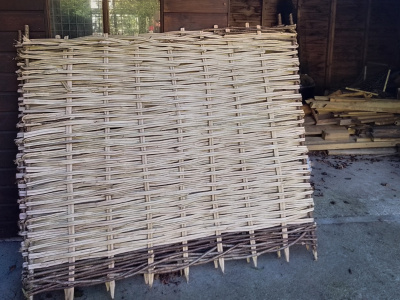
Hazel coppice, hurdles and hand tools
- Lag Wood, Hassocks, West Sussex
- 27 Oct 2025 - 28 Oct 2025
We champion sustainable, multiple purpose woodland management, and we know that we share this passion with many woodland owners, visitors and managers throughout the UK.
The connection between people and woodlands is backed up by specialist medical research, which shows not only that our ‘stress muscles’ in the face relax when we have been in woodland for a few minutes, but also that driving to work through a tree lined route makes us better able to solve problems at work, and less likely to be fractious after driving home. Viewing trees from the window of a hospital makes us recover more quickly, using lower doses of drugs*. We have found through our work in Telford that engaging residents to work in their local park woodland has a similar effect, by increasing physical activity, bonding social groups and increasing well being.
Young people learning skills and gaining confidence from woodland work will soon learn to transfer their skills to a more conventional workplace if they don’t wish to continue in forestry – but they will always retain that connection with living things and understand the need for care of the natural world.
This special connection also works with people who have been alienated from society, for whatever reason, whether they suffer from a mental health problem, or have been involved in crime, drug or alcohol abuse. A three or six month structured training programme learning how to manage woodlands and work in the countryside, has a real impact on those taking part.
Small woodlands have a special role in many of our (especially urban) communities and have a valuable role in reconnecting people with woodlands. More community groups are taking a new look at what their local woods can offer, and are showing interest in managing these woods to benefit their communities, to produce woodfuel, to enhance biodiversity and for access and health projects.
Moreover, engaging communities with a local woodland gives them a stake in its future, and means that is less likely to be flytipped, vandalised or abused. Having a community which knows and loves a woodland may be important when it comes to decisions on development and planning roads.